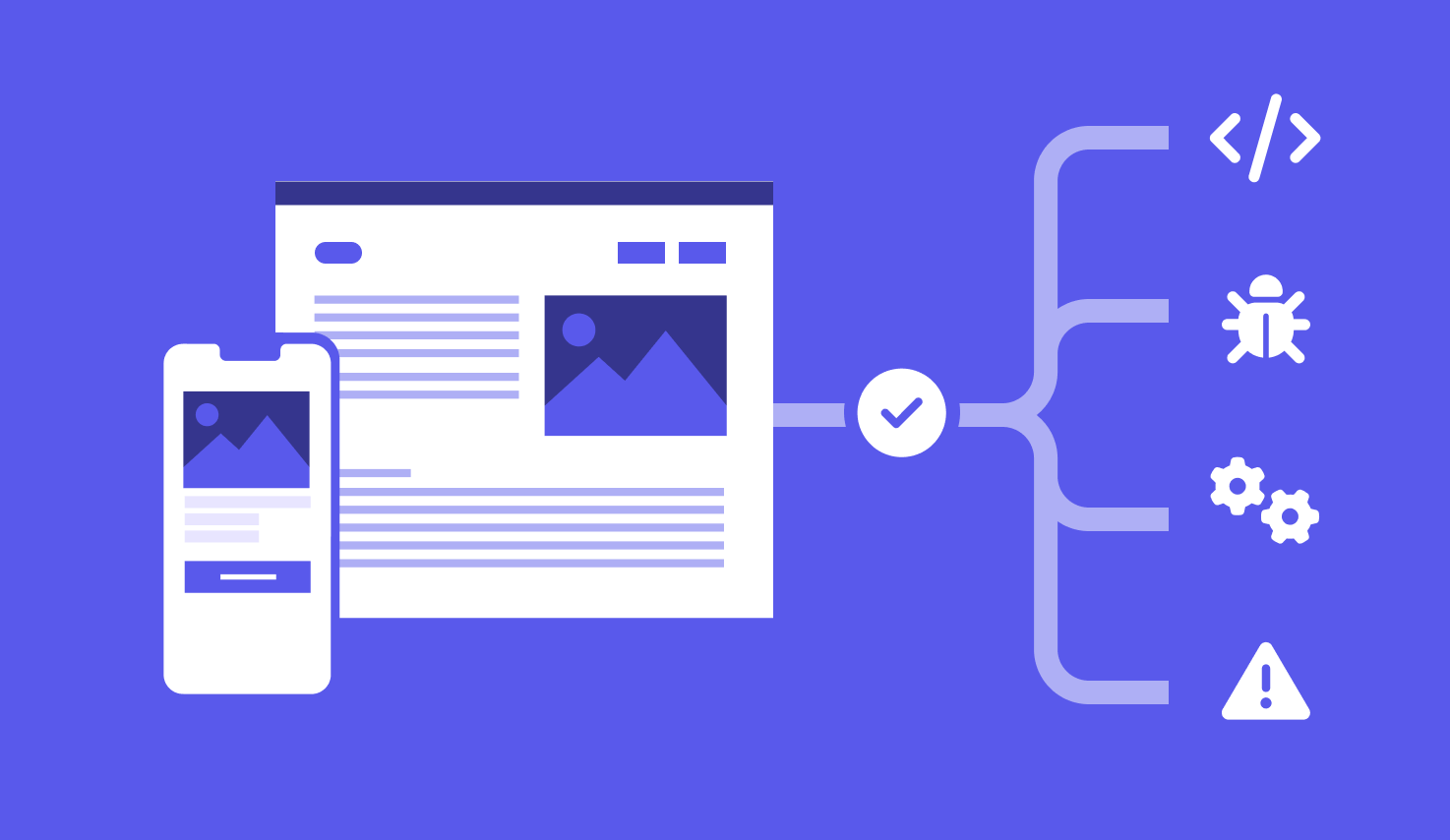Agile Testing Methodology: A Complete Guide for Agile Testers
Rigidity, delayed updates, or slow time-to-market - these problems can turn software testing into a bottleneck to the development pipeline and eventually a hindrance to the company’s overall growth. This is where agile methodology enters the scene, offering a flexible and responsive testing solution.
Since its introduction, agile principles and practices have been popularly adopted among development teams who aim for fast, effective delivery and exceptional software experiences. This article will walk you through how agile methodology is applied in software testing, its benefits, and best practices for testers.
What is Agile Testing?
Agile testing is a software testing approach following the best practices of Agile Development (iteration and collaboration) at its core. The testing process intertwines with software development instead of being separated into 2 different phases. The existence of testing at every step throughout the development cycle asks testers to work in tandem with developers for delivery at high speed, frequency, and quality.
To best understand Agile testing, we'll need to go back to the concept of Agile.
What is Agile?
Agile is a development methodology that emphasizes flexibility, collaboration, customer feedback, and iterative progress. It was introduced as an alternative to traditional project management approaches, such as the Waterfall model, which often proved too rigid and slow to adapt to changing requirements.
Agile's roots are found in the Agile Manifesto, created in 2001 by a group of software developers who outlined four core values and twelve principles to guide Agile development.
Core Values of Agile
Here are the core values of Agile as written in the Agile Manifesto:
- Individual and Interactions over Processes and Tools: Agile emphasizes the importance of communication and collaboration among team members over strictly following processes or relying on tools.
- Working Software over Comprehensive Documentation: While documentation is important, Agile prioritizes delivering functional software that meets user needs.
- Customer Collaboration over Contract Negotiation: Agile promotes continuous collaboration with customers to ensure their needs are being met throughout the development process.
- Responding to Change over Following a Plan: Agile accepts and expects changes in requirements, encouraging adaptability and flexibility.
Why is Agile Testing important?
“What difference does it make?” you might ask. The benefits are substantial when once-isolated teams collapse into a single entity. Here are several major advantages:
- Early error detection: Testing is executed right when the development kicks off, allowing errors to be fixed promptly along the project, not pushed far back to the end of the line. The outcome is continuous product adaptation, earlier feedback and on-time release to market.
- More efficiency for better quality: Agile methodology is beneficial not only for faster delivery but also for higher overall confidence in the quality of products. Emphasis is placed on dividing projects into small parts (known as sprints) and ensuring the code quality in every sprint. This practice prevents any bugs from snowballing into a huge problem.
- Cross-functional collaboration: Agile requires all stakeholders to stay in close cooperation. Having everyone on the same page can break down silos and mitigate miscommunication.
Agile Testing vs. Waterfall Testing
Before agile, software development was mainly conducted in Waterfall methodology - a step-by-step approach where testing takes place at the endpoint.

As we face rapid digitalization, there appear to be many setbacks in Waterfall testing, calling for a more flexible way of practice. Let’s dive into the differences between the 2 methods.
Criteria | Waterfall testing | Agile testing |
Characteristics | Testing happens at the end of the development cycle. This design structure is sequential and relatively rigid, as little can be changed during the project. | Agile is an incremental and flexible approach. Testing is performed in parallel with the development, allowing room for change. |
PIC | Testers work independently with developers. Everyone’s roles are straightforward and strictly defined. Quality assurance is at the hands of testers. | Testers work alongside developers toward the end goal of delivering the best software possible to customers. |
Approach | The waterfall model manifests a project mindset that prioritizes finishing the project. | Agile is all about the product and customers. Teams receive continuous feedback and adapt to satisfy customers’ demands. |
Process | Acceptance and regression testing are performed only at the end. | Acceptance and regression testing is implemented repeatedly after each iteration. |
Application | Most fitted for small and fixed-price projects with a stable development environment as it is easier to manage risk and less costly. | More efficient for larger projects or non-fixed contracts. |
Agile Testing Life Cycle
Below is the complete life cycle of an agile testing process - a series of 5 stages
The beauty of Agile is that these steps are repeatedly integrated to ensure that applications are updated following ongoing feedback and requirements. Let's look at each stage in-depth:
1. Test Planning
Purpose:
- Initial Preparation: Agile test planning begins during the project initiation phase. Testers collaborate closely with product owners, developers, and stakeholders to understand project requirements and user stories.
- User Story Analysis: Testers analyze user stories to identify acceptance criteria and define test scenarios. This process ensures that test cases align with expected user behavior and business goals.
- Test Strategy: Based on the analysis, testers formulate a test strategy outlining the types of tests (unit, integration, acceptance, etc.), tools, and techniques to be employed.
- Test Estimation: Estimating testing efforts and resources required for each sprint or iteration is crucial for planning purposes.
2. Daily Scrums (Stand-ups)
Purpose:
- Collaborative Planning: Daily scrum meetings, also known as stand-ups, bring together the development and testing teams to synchronize efforts and discuss progress.
- Identifying Impediments: Testers highlight any testing impediments or challenges they are facing, such as resource constraints or technical issues.
- Adaptation: Stand-ups provide an opportunity to adapt testing strategies based on changes in user stories or project priorities decided in the sprint planning meeting.
3. Test Agility Review
Purpose:
- Continuous Review: Throughout the Agile testing life cycle, regular review sessions are conducted to evaluate the agility of testing processes and adaptability to changing requirements.
- Quality Assessment: Test agility reviews assess the effectiveness of test cases and strategies in uncovering defects early in the development cycle.
- Feedback Incorporation: Feedback from stakeholders, customers, and team members is incorporated to refine testing approaches and improve overall quality assurance practices.
4. Release Readiness
Purpose:
- Incremental Testing: Agile promotes frequent releases of potentially shippable increments of the product. Release readiness testing ensures that each increment meets quality standards and is ready for deployment.
- Regression Testing: Before a release, regression testing verifies that new features and changes have not adversely affected existing functionality.
- User Acceptance Testing (UAT): Stakeholders participate in UAT to validate that the software meets business requirements and user expectations before deployment.
5. Impact Assessment
Purpose:
- Change Management: Agile teams frequently encounter changes in requirements, scope, or priorities. Impact assessment evaluates the effect of changes on existing test cases, test scripts, and overall testing efforts.
- Risk Analysis: Testers analyze potential risks associated with changes to prioritize testing activities and mitigate risks effectively.
- Communication: Impact assessment involves clear communication between development, testing, and business teams to ensure everyone understands the implications of changes on project timelines and quality goals.
What Does An Agile Tester Do?
In Agile practice, testing is an activity, not a role, which means that everyone shares the responsibility of meeting goals and quality assurance. Testers are no longer kept in the dark. The whole team approach puts collaboration at the forefront, with everyone on board involved in the entire process from start to finish of a development cycle.
Of course, there are specific job descriptions (or specializations) for testers and developers, but at the end of the day, the whole team strives for the same goal of delivering high-quality products. With that in mind, the role of testers does not stop just at logging bugs but helping to improve the overall delivery process. It can include:
- Validating user stories and defining acceptance criteria
- Joining daily meeting stand-ups
- Exploratory and regression testing
- Performing both automated and manual testing
Upon integrating agile testing, QA teams not only follow the practices of early and iterative testing but also have to adopt a new product-based and customer-oriented mindset. Rather than a set of rules and regulations, agile is about the principles that promote streamlined continuity, adaptability, and whole-team communication in delivering great end results to the customers.
Continuous Testing is The Key To Agile Development Success
Continuous testing is a software testing approach that involves executing automated tests as part of the software delivery pipeline. It aims to provide rapid feedback on the business risks associated with a software release candidate. Continuous testing is integrated into the Continuous Integration (CI) and Continuous Delivery (CD) processes, ensuring that every code change is automatically tested to identify any potential defects or issues early in the development lifecycle.

Continuous testing implies that testing is performed in parallel with software development as a built-in component of the delivery pipeline. While manual testing can be exhaustive and infeasible in such contexts, automated testing is of great help by enabling testers to run more testing backlog, improving the test build's overall quality.
Testing must come in early and be conducted frequently rather than being deferred after sprint completion, resulting in the need for test automation. Therefore, the most effective time to automate tests is simultaneously when the code is written. It is well-advised that automation is included in the definition of done, and automation efforts should be considered when defining user stories and sprint planning. Otherwise, delaying automation for the ‘perceived’ velocity of initial manual tests can be short-sighted and leads to a regression death spiral in agile delivery.
Ultimately, once continuous testing is well aligned with the SDLC, teams can achieve a dependable and sustainable development pace. Planning continuous testing in advance, combined with the right automation tool, is key to a successful agile development strategy.
Read more: Top 15 List of Automation Testing Tools | Latest Uptiondate in 2024
Agile Methodologies in Software Testing
Various types of testing are developed to support the agile testing processes. Below are some of the most commonly practiced ones.
1. Behavior-Driven Development (BDD)

Communication is key in agile, but facilitating undisrupted communication among parties is not always an easy task. For this reason, BDD was born.
BDD testing adopts an Agile approach to software testing, focusing on creating test cases in a clear and understandable language accessible even to non-technical individuals. Its primary aim is to enhance collaboration between the technical and business sides of an organization.
Gherkin language, a key component of BDD, is a specialized business-readable language designed to outline system behaviors and scenarios. It employs three fundamental statements: Given, When, and Then. Each statement serves a distinct purpose:
- Given: Establishes the initial context and sets up the starting point of the system.
- When: Specifies the action or event that triggers a change or behavior in the system.
- Then: Defines the expected outcome or result that should occur after the event described in the When statement.
Once system behavior is described in Gherkin, BDD testers transform it into a test script that computers can execute.
This testing framework focuses on the behavior of the product and user acceptance criteria. The Cucumber tool is often used together with BDD to automate tests in the natural English language. This makes it possible for anyone involved in the project to understand the conversation, regardless of their technical skills.
Read More: What is BDD Testing?
2. Acceptance Test Driven Development (ATDD)
Acceptance tests are functional tests that define how acceptable all the software’s performance is to the end-users. Before the release of a product, it should pass this final test.
Similar to BDD, ATDD gathers involved parties to work out user stories, clarify business requirements and calculate risks before any implementation of the corresponding coding. In this way, test cases are built upon the perspective of users. The code followed will answer the question: “Will the software function as it’s supposed to?”.
3. Exploratory testing

Exploratory testing is a spontaneous and manual software testing approach where testers investigate the system without predefined test cases or prior knowledge of its workings. Rather than adhering to a rigid test plan, testers immediately engage in testing and make real-time decisions about which areas to explore.
Agile environment asks for continuous changes, which in turn requires frequent testing. Exploratory testing comes into this development flow by encouraging testers to keep constantly discovering, learning, and executing.
This approach grants testers the freedom to experience and explore software’s functions from the point of view of end users. Testers can utilize their curiosity and core strengths to make decisions about what to test on their own accord.
Learn More: What is Exploratory Testing?
The Agile Testing Quadrants
Listing these kinds of testing doesn’t mean that an application has to go through all of them. Testing is context-dependent, indicating that based on the situation, testers have to make decisions on what to test, what technique should be used, and when and how it should be used.
Lisa Crispin's “agile testing quadrants” concept is the tool that helps answer the above questions.
The process is divided into 4 quadrants, each containing types of testing best suited for different business situations. This matrix also suggests whether the team should apply manual or automated testing in their strategy.
- Quadrant 1: The first quadrant includes unit tests and component tests, which focus on ensuring the code build and supporting the team from a technological perspective on an ongoing basis.
- Quadrant 2: Tests in this quadrant are more customer-focused and business-driven. They serve the purpose of assisting agile teams and improving end results from business and customer value standpoints. Test cases can be run either manually or automatically.
- Quadrant 3: Exploratory testing or usability testing are suggested as they now take into account the quality of not just the code but also the user experience. These are associated with manual testing performed by experienced QA engineers, as this quadrant involves a lot more intuition, critical thinking, and customer interaction.
- Quadrant 4: The last quadrant contains non-functional tests such as Security Tests, Performance Tests, and Acceptance Tests to check the quality of factors such as software stability or data security. These types of tests are also common in the field of test automation.
It should be noted that the four quadrants do not imply any sequence or order teams have to work through. They simply provide a taxonomy for agile testers to plan their testing strategy more accurately with the right testing method, technique, and resources.
Agile Testing Strategy
Traditional testing commonly follows a heavy documentation-based process. However, in agile testing, the emphasis is placed on delivering software over comprehensive documentation, which allows testers to be more flexible and responsive to shifting requirements.
Therefore, rather than mapping out activities in detail, teams should create a test strategy that provides an overall approach, guidelines, and objectives.
While there isn’t a single formula to follow considering variants in teams' backgrounds and resources, some standard elements should be factored into an agile testing strategy.
1. Sprint planning
No matter what testing methodology you use, a test strategy needs to define the testing approach, processes, and roles so that all members can get clarity on the project without any silos.
Developers and QE teams can have a discussion with each other about the following items:
- Test purposes and objectives (Based on user stories)
- Testing scope and timeline: What needs to be tested and for how long
- Methods: Define how tests are run, including types of testing, testing tools, and testing environments
Read more: How to Build A Successful DevOps Testing Strategy for Agile Teams
2. High level of automation
Test automation is an essential part of agile testing. With Agile test automation, continuous integration can be facilitated in a more straightforward manner. In comparison, manual testing shows less efficiency in handling problems such as extensive test coverage, a tremendous amount of regression testing, and pressure on delivering software quality promptly.
It is critical for Agile testers to ensure a high degree of automation for continuous feedback and iteration whenever the code is changed. Going automated can be more effortless with the Katalon Platform - a powerful and comprehensive solution to your software quality management.
3. Risk Management
Delivering at speed in a constrained time frame means that resources should be estimated and allocated wisely for the team to focus on the proper priority. Tests can be sequenced in the order of associated risks, that is, tasks with higher risks require more attention and effort, and vice versa.
Performing risk analysis before any test execution can optimize the effectiveness and bring out the essence of agile testing.
An Example of Agile Testing Plan
Finding the right automation tool is a crucial component to starting your automation journey. Katalon Studio can be the tech piece that fits into your agile testing strategy by satisfying all the requirements above - effective planning mechanism, efficient prioritization, and readiness evaluation.
Transitioning into an agile QA doesn’t have to be perplexing or challenging with Katalon - an end-to-end quality management platform that requires a short learning curve, providing software testers with an easy-to-deploy solution. Discover how agile testers can leverage automation and efficiency with Katalon.
Let's take a closer look at how Katalon TestOps operates. The Planning tab will show you the consolidated results for those tests. In other words, it will present the latest status of each test, independent of the number of test executions you make with them.
By then, you can see the overview of your release status, which releases are ready and which are not, along with the total number of test cases and test runs linked to that release. This gives you a presentable picture to decide the readiness of a product release.
Interested? Here's a quick demo of how Katalon works:
You might like:





